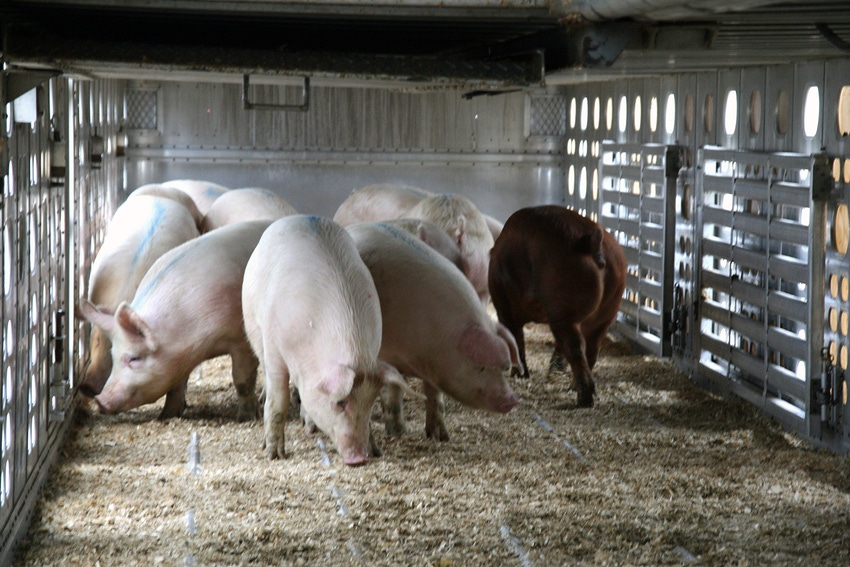After April's price decline for lean hogs, what comes next?
Slowing wage growth, continued inflation and higher interest rates have put some consumers in a financial squeeze that could be hurting pork demand.
May 13, 2024

It has been a disappointing few weeks in the hog and pork markets. That can be clearly seen in Figure 1, the daily chart for July Lean Hogs.

Figure 1
After peaking back on April 10 at $111.25 and closing that day at $107.50, this contract has fallen all the way back to today’s close at $100.05. The April price decline is not normal for lean hogs which frequently peak in mid-May, offering the year’s best pricing opportunities for both the summer and fall contracts. The decline has everyone asking “What comes next?”
To answer that question at all, we have to first answer the question of what just happened. As readers are well aware, economists boil down just about every such question into two factors: supply and demand. So let’s investigate those factors of late.
Hog and pork supplies have been almost precisely what I expected after the March Hogs and Pigs report. See Figure 2. In fact, cumulative federally-inspected slaughter from the week that ended March 8 through last Friday amounted to 24.357 million head, just 47,645 head or 0.2% fewer than my aggregate forecasts FI slaughter of 24.405 million head. The actual total is just 0.15% larger than USDA’s weight class inventories would have suggested over that time. Both of those misses are very small.

Figure 2
Further, total FI slaughter so far in 2024 is just 0.5% higher than last year and total YTD production is just 0.1% higher. Add that to lower frozen pork inventories and I think one can safely conclude that this is not a supply-driven situation.
Demand is another story. Real per capita expenditures for pork (a measure of the status of consumer-level pork demand) continued to trail year-ago levels in March, the most recent month for which all data are available. See Figure 2. March was a slight improvement versus last year from January but it still only pulled YTD pork RPCE to -5.8% versus one year ago. The real (ie. deflated) retail pork price was 2.6% below year-ago level in March while per capita disappearance/ consumption was 3.6% lower than last year. Lower price and lower quantity can mean only one thing: lower demand at the consumer level.
The positive side of demand has been exports but even those cooled a bit in March, gaining only 2%, yr/yr after increases of 5.8% and 17.7% in January and February. Still, YTD US pork exports are up 8% from last year. With exports accounting for roughly 25% of total US carcass-weight production, that 8% growth accounts for 2% more of our total production that is going overseas instead of finding a home here in the U.S.
The downward pressure of domestic demand and upward lift of export demand have left wholesale pork demand higher than last year. See Figure 3. Since the wholesale level involves all of the pork sold by U.S. suppliers, note that the quantity variable in Figure 3 is total pork availability. Higher availability (which equals market offtake) and a projected higher cutout value still means higher demand versus 2023 but the 2024 observation in Figure 3 was up near the 2021 and 2022 observations in late March.

Figure 3
Another contributing factor is some degree of tightening for the wholesale-retail price spread this year, a welcome development for those who noted how wide it got in early 2023.
Slowing wage growth, continued higher-than-wanted inflation and higher interest rates have put some consumers in a financial squeeze that could be hurting meat demand in general and pork demand in particular. A colleague here at Ever.Ag told of a stop at a major fast-food chain last week that ended up costing $31 for just two people. Ouch.
I still expect some seasonal strength in both wholesale and hog values over the next few months. The average net price of all barrow-gilts was $89.73 in April. I expect that to rise to the mid- to upper-$90s in June and July. The cutout value should go from April’s $99.08 to the upper $100s (short of $110) in June and July. Those figures would put the CME LH Index in the upper $90s this summer – a level still below those “disappointing” futures prices I mentioned in paragraph 1.
Take your action cue from your financial position. Can you stand more losses or must you shore up the P/L sheet to keep your balance sheet from eroding farther? While things are better, my profit outlook for 2024 now stands at a LOSS of $0.30 per head for 2024. That’s far better than last year’s $27.71 per head average loss but not nearly as good as the $9.70 profit that futures markets offered just a couple of months back.
About the Author(s)
You May Also Like





